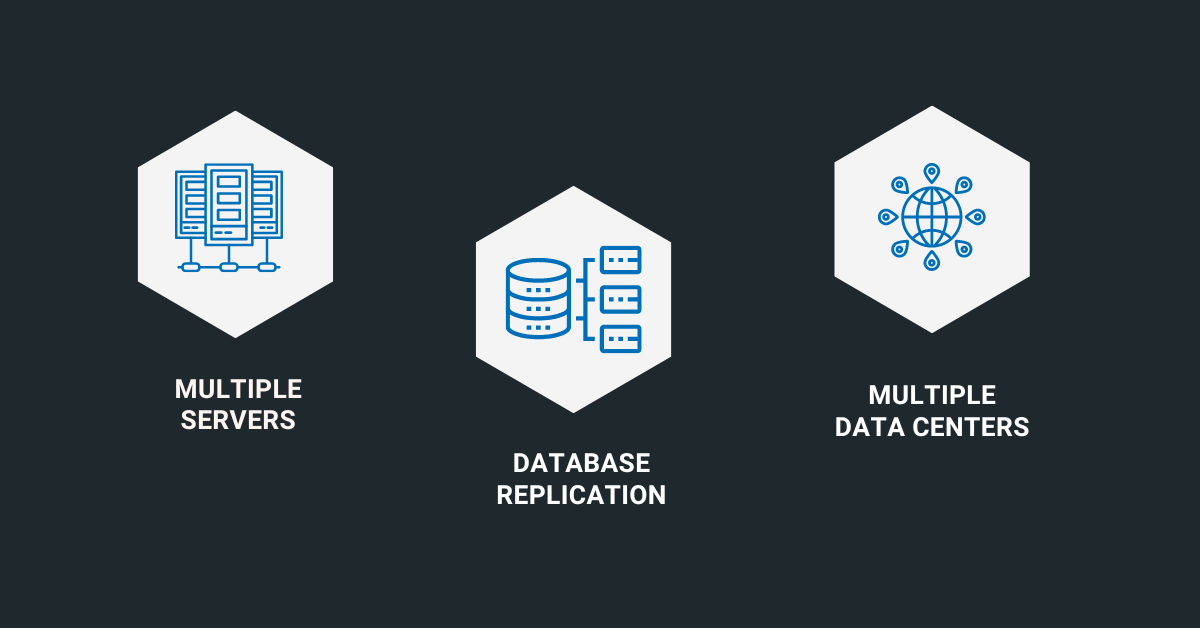In the ever-changing business world, preparing for the unknown is crucial. Despite their similar names, RTO and RPO play different but essential roles in safeguarding your business. Let’s break down these concepts and learn how they can protect your company from unexpected challenges.
What is RTO and RPO in disaster recovery?
RTO and RPO are two critical metrics in the field of disaster recovery and business continuity planning. Both are essential in ensuring that businesses can effectively manage and recover from disruptive events, such as natural disasters, cyber-attacks, or system failures. They play a pivotal role in determining the level of preparedness and resilience of an organization in the face of unforeseen circumstances. Understanding and defining these metrics accurately is crucial for developing comprehensive strategies that can minimize downtime and data loss, thereby safeguarding the continuity of operations.
What is recovery time objective (RTO)?
Recovery Time Objective (RTO) refers to the targeted duration of time within which a business process must be restored after a disaster or disruption occurs. It signifies the maximum tolerable length of time that a system or network can be down before the consequences become significantly detrimental to the organization. RTO is a crucial metric in disaster recovery planning and aids in determining the resources and strategies required to minimize downtime and resume operations swiftly and effectively.
How to Calculate RTO
To calculate Recovery Time Objective (RTO), follow these steps:
- Identify the critical business processes and systems: Determine which processes and systems are crucial for the business's operations.
- Establish the maximum tolerable downtime: Consult with key stakeholders to determine the maximum duration that these critical processes can remain inactive without causing significant harm to the business.
- Assess the time required for recovery: Evaluate the time it takes to restore the identified systems and processes to their fully functional state following a disruptive event. This includes the time needed for data recovery, system repair, and any other necessary steps.
- Calculate the RTO: Once you have the maximum tolerable downtime and the estimated time for recovery, the RTO is the maximum acceptable duration for recovery, indicating how quickly the business should aim to resume normal operations after an incident.
By accurately calculating the RTO, organizations can better plan their disaster recovery strategies and allocate the necessary resources to ensure timely and effective recovery in the event of a disruption.
What is recovery point objective (RPO)?
Recovery Point Objective (RPO) is a metric that defines the acceptable amount of data loss measured in time in the event of a disaster or disruption. It signifies the point in time to which data must be recovered to resume normal operations without causing significant damage or loss to the organization. RPO plays a critical role in data backup and disaster recovery strategies, helping organizations establish the frequency of data backups and the efficiency of their data recovery processes.
How to Calculate RPO
To calculate Recovery Point Objective (RPO), follow these steps:
- Identify critical data: Determine the data that is crucial for the organization's operations and needs to be recovered in the event of a disaster or disruption.
- Determine the maximum tolerable data loss: Consult with stakeholders to establish the maximum acceptable amount of data that can be lost without significantly impacting the business operations.
- Evaluate data backup frequency: Assess the frequency at which data backups are performed. This includes understanding how often data is backed up and stored in a secure location.
- Calculate the RPO: The RPO is the maximum time period between the last data backup and the occurrence of a disruptive event. This metric indicates the acceptable data loss window and helps in determining the frequency of data backup procedures to ensure that data can be recovered within that time period.
By accurately calculating the RPO, organizations can establish appropriate data backup schedules and implement effective data recovery measures to minimize data loss and maintain business continuity during unforeseen incidents.
RTO vs RPO: Key differences
RTO (Recovery Time Objective) and RPO (Recovery Point Objective) are two critical metrics in disaster recovery planning, yet they serve different purposes and represent distinct aspects of business continuity.
RTO focuses on the acceptable downtime for critical business processes or systems in the event of a disruption. It indicates the maximum duration within which these processes must be restored to ensure minimal impact on the business operations. RTO essentially measures the speed at which an organization can recover its operations after a disaster. On the other hand, RPO centers on data integrity and signifies the maximum acceptable data loss that an organization can sustain. It reflects the time gap between the last data backup and the occurrence of a disruptive event.
While RTO emphasizes the timely restoration of business functions, RPO prioritizes data recovery and ensures that organizations can recover data up to a certain point in time to minimize data loss. In essence, RTO focuses on operational continuity, emphasizing the speed of recovery, while RPO emphasizes data integrity, ensuring that critical data can be recovered within specific constraints. Understanding these key differences is crucial for developing a comprehensive disaster recovery and business continuity strategy that addresses both operational and data-related concerns effectively.
RTO and RPO business continuity example scenario
Let's consider an organization that sets an RTO of 2 hours. If a disaster strikes at 10AM, their services must be up and running by 12PM to meet their RTO commitment.
Similarly, let’s say the organization establishes an RPO of 4 hours. They take a data backup at 12PM and schedule the next one for 4PM. In case of any disaster between 12PM and 4PM, they can restore their systems to the 12PM backup, leading to a maximum data loss of 4 hours. By adhering to these timelines, the firm can ensure minimal disruptions and data loss, enabling them to serve their clients efficiently.
How Meridian can help with disaster recovery and business continuity
Meridian provides comprehensive solutions to streamline your disaster recovery and business continuity processes. With our advanced technology and expertise, we ensure that your organization can effectively meet RTO and RPO requirements, minimizing downtime and data loss. Our tailored strategies and reliable support enable you to navigate unforeseen disruptions seamlessly, safeguarding your operations and enhancing overall business resilience. Trust Meridian to secure your business's continuity, even in the face of unexpected challenges.
Contact us today to learn more about how we can help your business or organization.


.jpeg)

